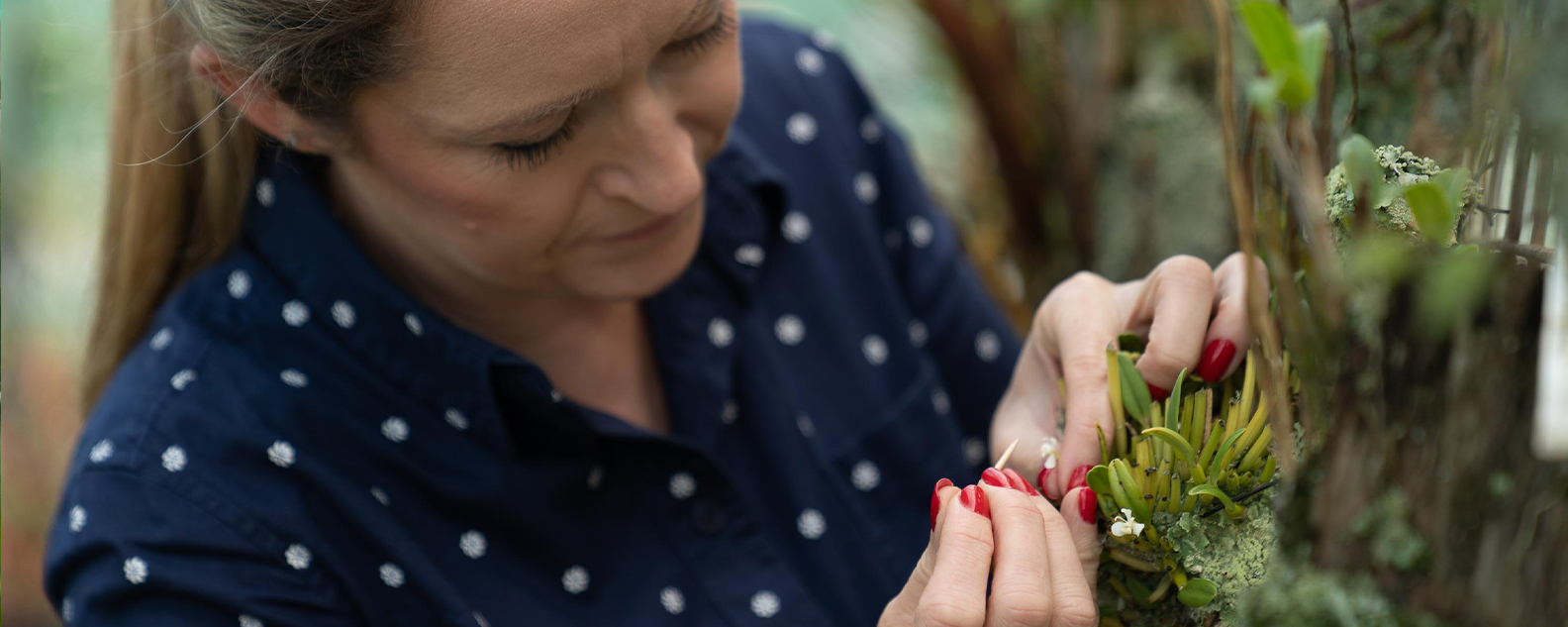Many of our native terrestrial orchids are threatened, with habitat loss, herbivore browsing, small population size, and protracted drought being major contributing factors. Catastrophic climate change may also pose a threat to their survival.
Our team is focused on understanding better the germination and propagation requirements of eight terrestrial orchid species from NSW, including:
- Pterostylis despectans
- Calochilus pulchellus
- Caladenia tessellata
- Thelymitra kangaloonica
- Prasophyllum petilum
- Genoplesium plumosum
- Rhizanthella slateri and
- Rhiaznthella speciosa
We're using ex-situ conservation techniques like soil and in-situ baiting, hand pollination and seed collection to help develop propagation techniques for each species, along-side symbiotic germination to try to grow them.
Our research goals include:
- identifying suitable mycorrhizal fungi
- develop suitable culture and storage methods for mycorrhizal fungi,
- develop suitable germination and growth conditions for the orchids
- Establish potted collections of plants suitable for translocation, and
- preserve orchid and fungal germplasm at the Australian PlantBank, within the Australian Botanic Garden Mount Annan
- Contribute to the translocation of some of these species to support their survival in the wild.
In 2022-2023, we’ll build on previous results, extend current findings, adopt new methods, and optimise techniques that have already succeeded. Our primary objective is to develop propagation techniques for each species and the conservation of other closely related species. Together, we can safeguard the future of these beautiful orchids and contribute to their continued existence in the wild.
Project team:
- Zoe-Joy Newby
- Jessica Wait
- Karen Sommerville
Related publications:
Isolation, propagation and storage of orchid mycorrhiza and legume rhizobia 2021 In ‘Plant Germplasm Conservation in Australia: strategies and guidelines for developing, managing and utilising ex situ collections. Third edition.’ (Eds AJ Martyn Yenson, CA Offord, PF Meagher, TD Auld, D Bush, DJ Coates, LE Commander, LK Guja, SL Norton, RO Makinson, R Stanley, N Walsh, D Wrigley, L Broadhurst) pp 373-402.

